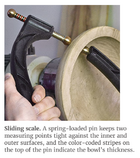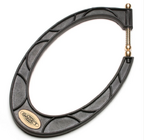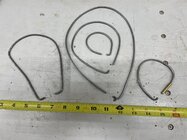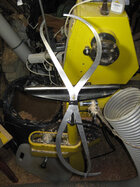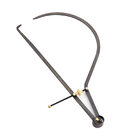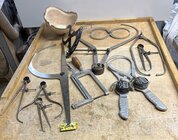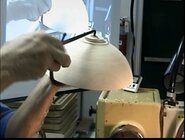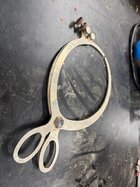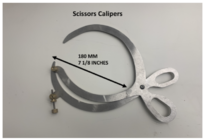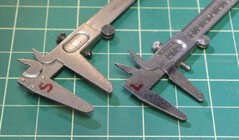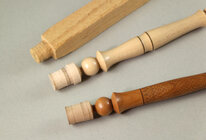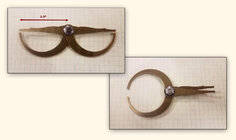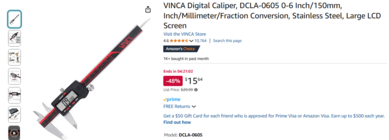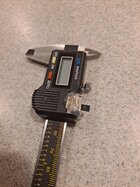Hi, I've always had trouble with calipers. User error I'm sure. Where when I get down to where I want to measure, I then have to open up the calipers to get them out and look at the space/thickness.
I was going to just post that question but I did a bit of searching online and found that the term "breadth calipers" brings up basically the same calipers but with an angle measurement up by where you adjust it. They also come with little round circles at the ends rather than sharp points so you don't scratch what you are measuring (human beings by intent I believe). Pretty nifty.
Then I noticed the double end calipers. The ones that look like a figure 8. I guess I never realized that you could take a measurement on the one end and see the same opening on the other end, thus being able to measure before moving.
I guess I'm kind of slow to pick up on the advancements of engineering over the past 2000 years. But I thought I'd post here in case others were struggling like me. And/or to hear about other marvels of mankinds measurements.
I was going to just post that question but I did a bit of searching online and found that the term "breadth calipers" brings up basically the same calipers but with an angle measurement up by where you adjust it. They also come with little round circles at the ends rather than sharp points so you don't scratch what you are measuring (human beings by intent I believe). Pretty nifty.
Then I noticed the double end calipers. The ones that look like a figure 8. I guess I never realized that you could take a measurement on the one end and see the same opening on the other end, thus being able to measure before moving.
I guess I'm kind of slow to pick up on the advancements of engineering over the past 2000 years. But I thought I'd post here in case others were struggling like me. And/or to hear about other marvels of mankinds measurements.

